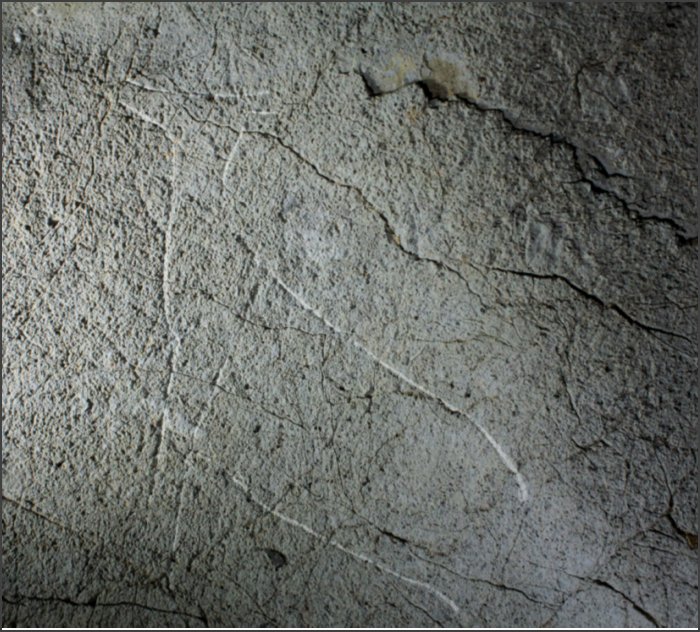Paleolithic engravings found in the cave of Erlaitz, near Ekain

Arrizabalaga has indicated that there is no doubt of its veracity: “The erosion of the furrows and the upper stalagmitic crust demonstrate their authenticity.” They are engraved in the form of an animal and although they have not been able to identify them all, they clearly distinguish horse heads, uros and a female deer, among others. Specifically, Arrizabalaga highlighted the presence of female deer.
Antxieta has determined that it was difficult to see the prints. Because they are not in an easy place: “They are located on the ceiling of the camera and their access is very complicated. In the beginning, in addition, they did not differ, but with lateral light the irregularities were highlighted and then the water and the others were clearly explained.”
In addition to thanking the work of the antxietarras, Arrizabalaga stressed the importance of discovery: "On a four-kilometre line there are three caves with Palaeolithic remains: Danbolinzulo, Erlaitz and Ekain. And chronologically, the three are quite followed: the oldest is Danbolinzulo, then comes Erlaitz and the newest is Ekain. The footprints of the drummer can be from Gravetteal, about 25,000 years ago; the Hives can be associated with the Solutrense, or they can be from the ancient Magdalenian, of 22,000-15,000 years ago; and finally, those of June, more recent than them, of 15,000-11,000 years ago".
Completing knowledge about the Upper Palaeolithic
Álvaro Arrizabalaga has recognized that it is no coincidence that these caves have been found in the same area: "When we collect the traces of the Palaeolithic, we try to know what were the natural steps of the time and in them we seek. With the same effort, you are more likely to find something. It is then that, probably, there is an axis that links the valleys of the Urola and the Deba, the valley of the Endoia and the valley of Lastur, so in recent years we are in this area. It is not a matter of making more effort, but of reorienting that effort towards concrete places."
Therefore, according to Arrizabalaga, this area has been widely used in the past, since in addition to being a residence, it has also been a step. "And the roads were very important for them, since they were itinerant groups," he explained.
Arrizabalaga believes the prints will be as abundant as the paintings. "What happens is that they are much more difficult to identify. You learn much faster to see and identify paintings, while prints are not easy to see, especially if they are light. An engraving is not at random, you have to go to that destination. Proof of this is that the first discoveries are always those of paintings." According to Arrizabalaga, "we have to know what to look for and train the eyes".
Considering the number of caves to encinate rupestres found in Cantabria, and since in the Basque Country the density is lower, Arrizabalaga considers that there are still caves to be discovered. "The environment is similar and in Cantabria there are 8 or 9 more caves per square kilometer. That means we have to keep looking." On the other hand, the murals of Erlaiz present similarities with some of those of these Cantabrian caves. The most notable similarities occur in the Castle Mountains, both in the Castle Cave itself and in the Chimneys and La Pasiega of the surroundings. In the Autonomous Community of the Basque Country, the cave of El Rincón, located in Bizkaia, is the most similar.
In the words of Arrizabalaga, “thanks to the discoveries we are making and we are going to make in Gipuzkoa and Bizkaia, we are knowing the territoriality of the Paleolithic hunter-gatherers, united to their sanctuaries”.
Buletina
Bidali zure helbide elektronikoa eta jaso asteroko buletina zure sarrera-ontzian










